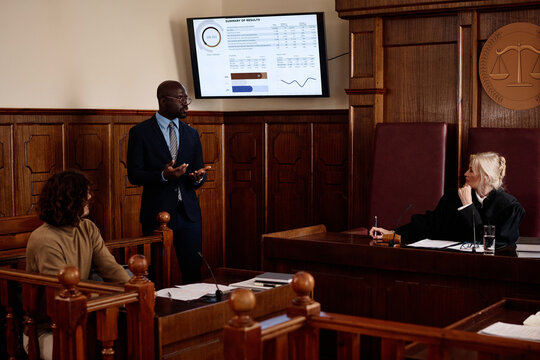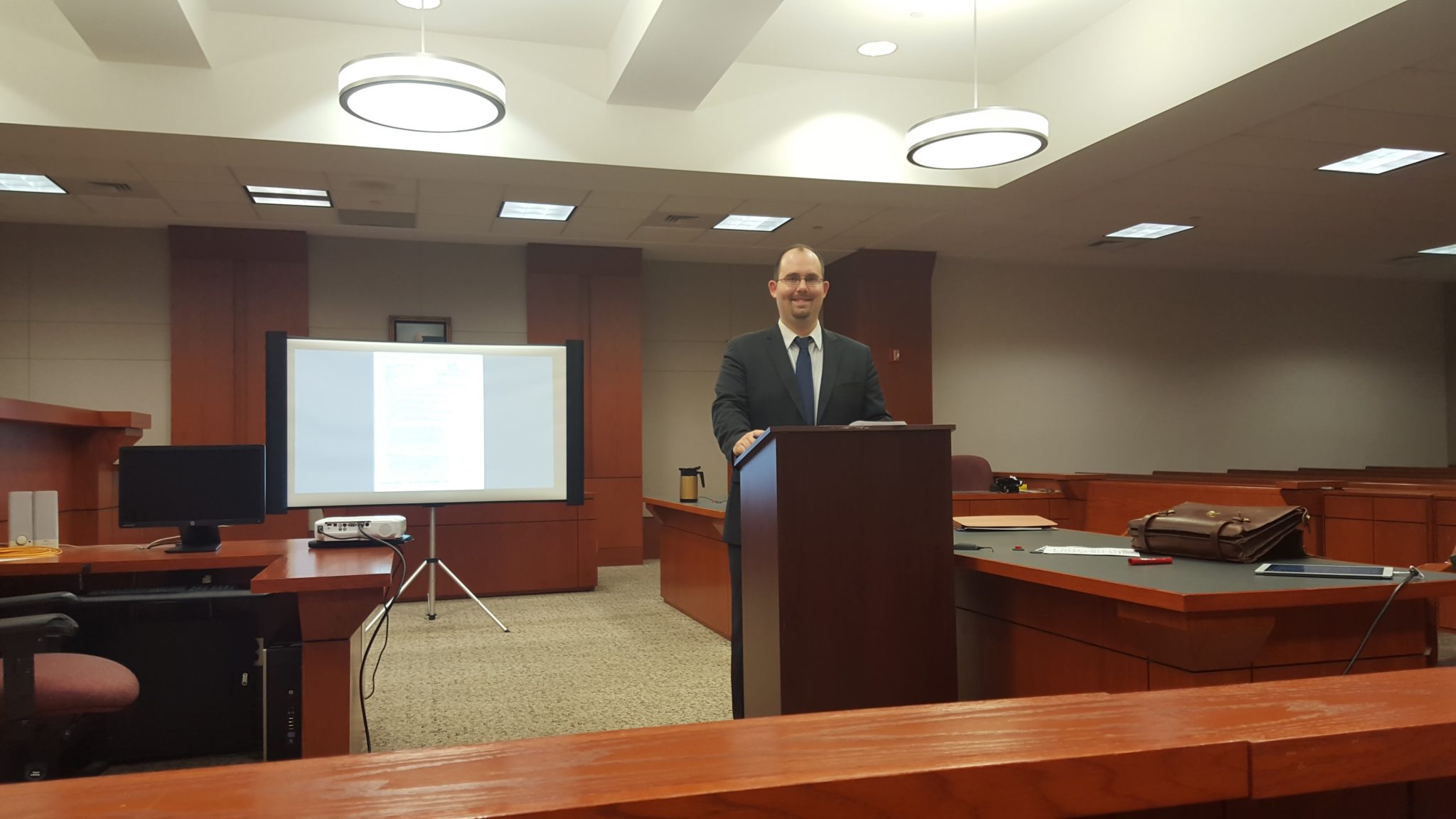Navigating the Intricacies of Trial Presentations: Tips for Seamless Distribution and Compelling Debates
In the world of legal procedures, the art of trial discussion stands as an important determinant of success. As lawyers navigate the detailed web of court room dynamics, the capacity to perfectly supply disagreements and proof while mesmerizing the court's attention comes to be paramount. The intricacies fundamental in test presentations need a fragile balance of ability, finesse, and method. By refining techniques that guarantee a sleek delivery and crafting compelling disagreements that reverberate with the audience, attorneys can dramatically enhance their advocacy. In a world where persuasion rules supreme, understanding the intricacies of trial presentations is not simply an alternative but a requirement for those seeking to prevail in the court.

Understanding Trial Goals
To successfully browse a test, it is essential to have a clear understanding of the goals that require to be attained. Prior to stepping into the courtroom, legal teams need to specify their objectives and wanted end results. These objectives work as directing principles throughout the trial, shaping methods and affecting decision-making procedures.
Recognizing test purposes entails a thorough evaluation of the instance, lawful criteria, and the customer's benefits. Trial Presentations. It calls for a thorough exam of the realities, recognizing vital concerns, and preparing for possible obstacles. By establishing certain and measurable goals, lawyers can customize their disagreements and presentations to straighten with the wanted outcomes
Additionally, a clear understanding of trial objectives makes it possible for lawful teams to prioritize proof, witnesses, and lawful disagreements efficiently. It permits the growth of a meaningful narrative that resonates with the discretionary, enhancing the total situation discussion.

Organizing Proof Successfully
Having a clear understanding of trial purposes lays the structure for organizing proof effectively in lawful proceedings. By straightening the presentation of proof with the preferred outcomes of the trial, lawful teams can reinforce their disagreements and enhance their persuasiveness.
One more crucial element in organizing proof efficiently is developing a logical circulation. Presenting proof in a consecutive and meaningful fashion can help develop a compelling story that supports the lawful arguments being made. Furthermore, making use of visual help such as timelines, charts, or graphes can even more boost the company of evidence and help in making clear complex connections or series of occasions.
Additionally, making sure that all proof presented is acceptable and pertinent to the situation is crucial. Irrelevant or inadmissible proof can diminish the toughness of the argument and potentially harm the integrity of the here and now party. For that reason, a careful testimonial and option procedure need to be undertaken to include only the most impactful and legally sound evidence in the trial presentation.
Crafting Convincing Narratives
Crafting engaging stories plays a crucial role in presenting persuasive arguments during legal procedures. A well-crafted narrative has the power to mesmerize the audience, evoke emotions, and eventually persuade the decision for the here and now celebration. When building a narrative for a trial presentation, it is important to establish a clear storyline that highlights essential points and connects them in a coherent manner. Begin by outlining the facts of the case in an engaging fashion, making certain that the series of occasions is simple to follow. Introduce personalities properly, giving history info that helps the target market comprehend their inspirations and actions. Additionally, incorporating vivid summaries and appealing language can bring the narrative to life, making it more remarkable for the discretionary. By weaving together proof, statement, and legal debates right into a influential and cohesive story, lawyers can effectively support for their clients and increase the chance of a positive outcome in the court room.
Grasping Aesthetic Help
Effective use aesthetic aids is essential to boosting the influence and clarity of test discussions. Visual aids, when used purposefully, have the power to simplify complex info, enhance bottom lines, and leave an enduring impact on the judge and jury. To grasp aesthetic help in test discussions, it is essential to guarantee that they are clear, succinct, and pertinent to the debates being made.
When incorporating visual aids, such as charts, charts, photos, or timelines, right into a test discussion, it is vital to maintain them aesthetically appealing yet specialist. The visuals should complement the verbal arguments, providing a visual representation of the information being discussed without frustrating the target market with unneeded information.
Additionally, exercising with the aesthetic aids in advance is necessary to make certain a smooth shipment during the trial. Familiarizing oneself with the web content, changes, view publisher site and timings of each aesthetic aid can help maintain the circulation of the discussion and stop technical glitches that might emerge.
Providing Impactful Closing Disagreements
An engaging closing argument serves as the end result of a trial discussion, encapsulating the core story and persuading the court and jury towards a desirable decision. Begin by laying out the main debates that support your client's placement, emphasizing why the proof offered throughout the trial sustains your story.
Furthermore, including emotional charm can better enhance your closing disagreement. By attaching and humanizing the case on a personal level with the decision-makers, you can stimulate compassion and understanding, influencing their understanding of the realities presented. Additionally, repeating the lawful standards that should be satisfied for a desirable judgment can strengthen the image source legitimacy of your position. Eventually, a well-crafted closing argument should leave a long-term perception, compelling the court and court to regulation in your client's favor.
Final Thought
Finally, grasping trial presentations includes comprehending goals, organizing evidence, crafting narratives, utilizing visual help, and supplying impactful closing debates. By applying these approaches properly, legal representatives can offer their situation effortlessly and make compelling arguments in the courtroom. It is essential to navigate the intricacies of test presentations with precision and ability to attain success in lawful proceedings.
By aligning the discussion of proof with the preferred outcomes of the test, lawful teams can strengthen her explanation their debates and improve their persuasiveness (Trial Presentations). To grasp visual help in trial presentations, it is crucial to make certain that they are clear, concise, and relevant to the debates being made
An engaging closing argument offers as the conclusion of a trial discussion, encapsulating the core narrative and encouraging the judge and court in the direction of a beneficial choice. Begin by detailing the main debates that support your customer's setting, emphasizing why the proof presented throughout the test supports your story.In conclusion, understanding trial discussions includes understanding goals, organizing evidence, crafting stories, using aesthetic aids, and supplying impactful closing arguments.